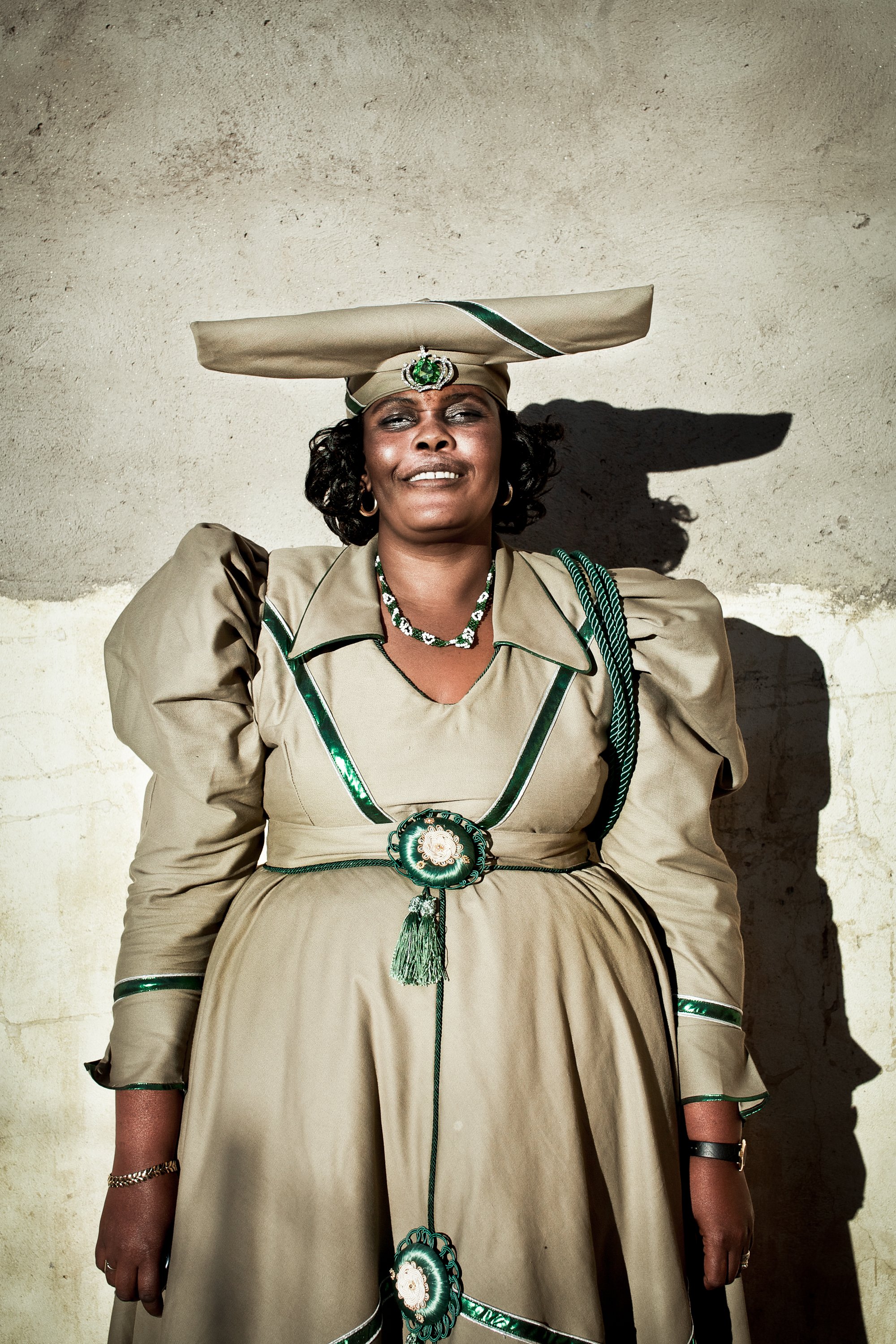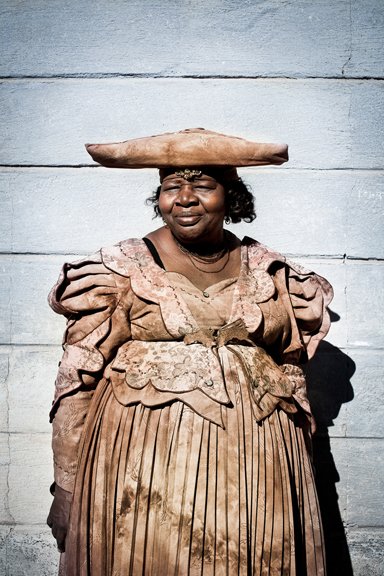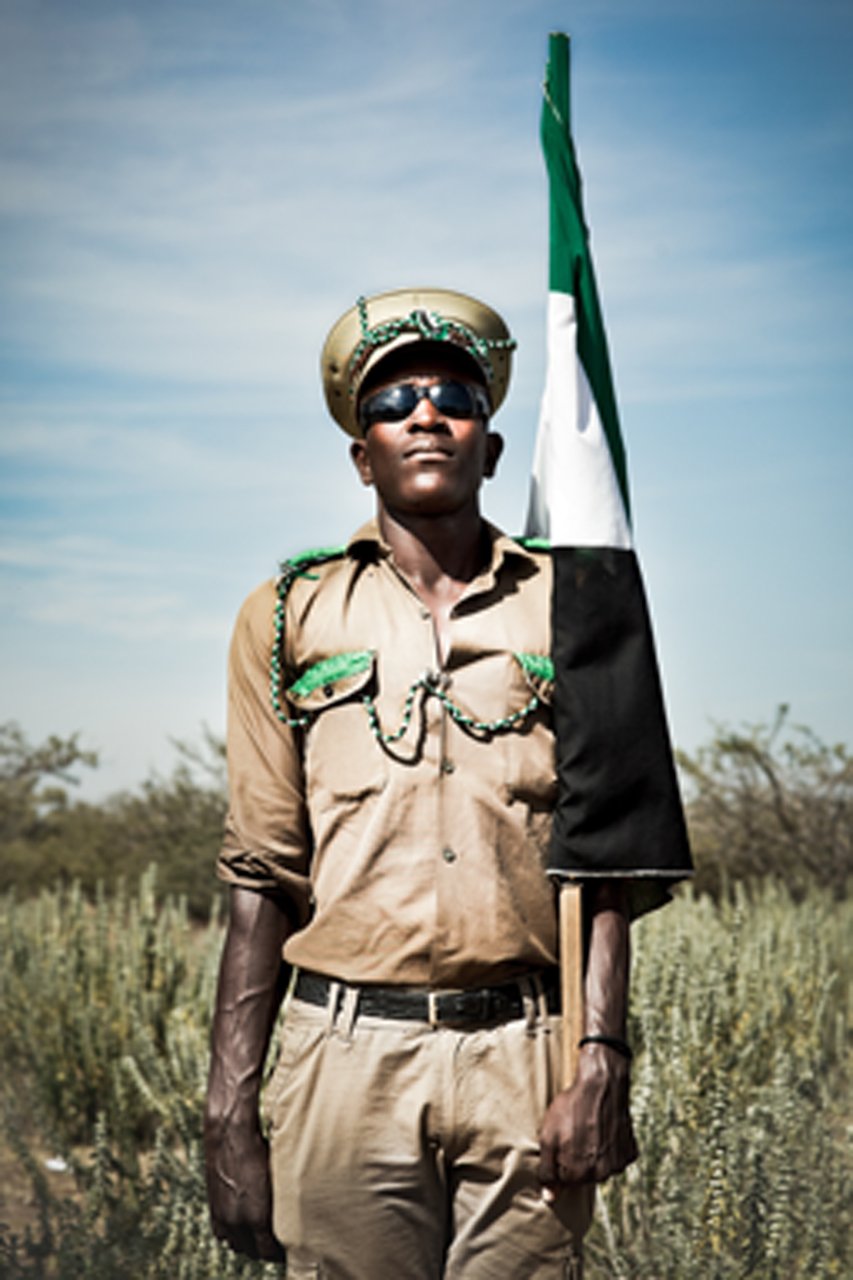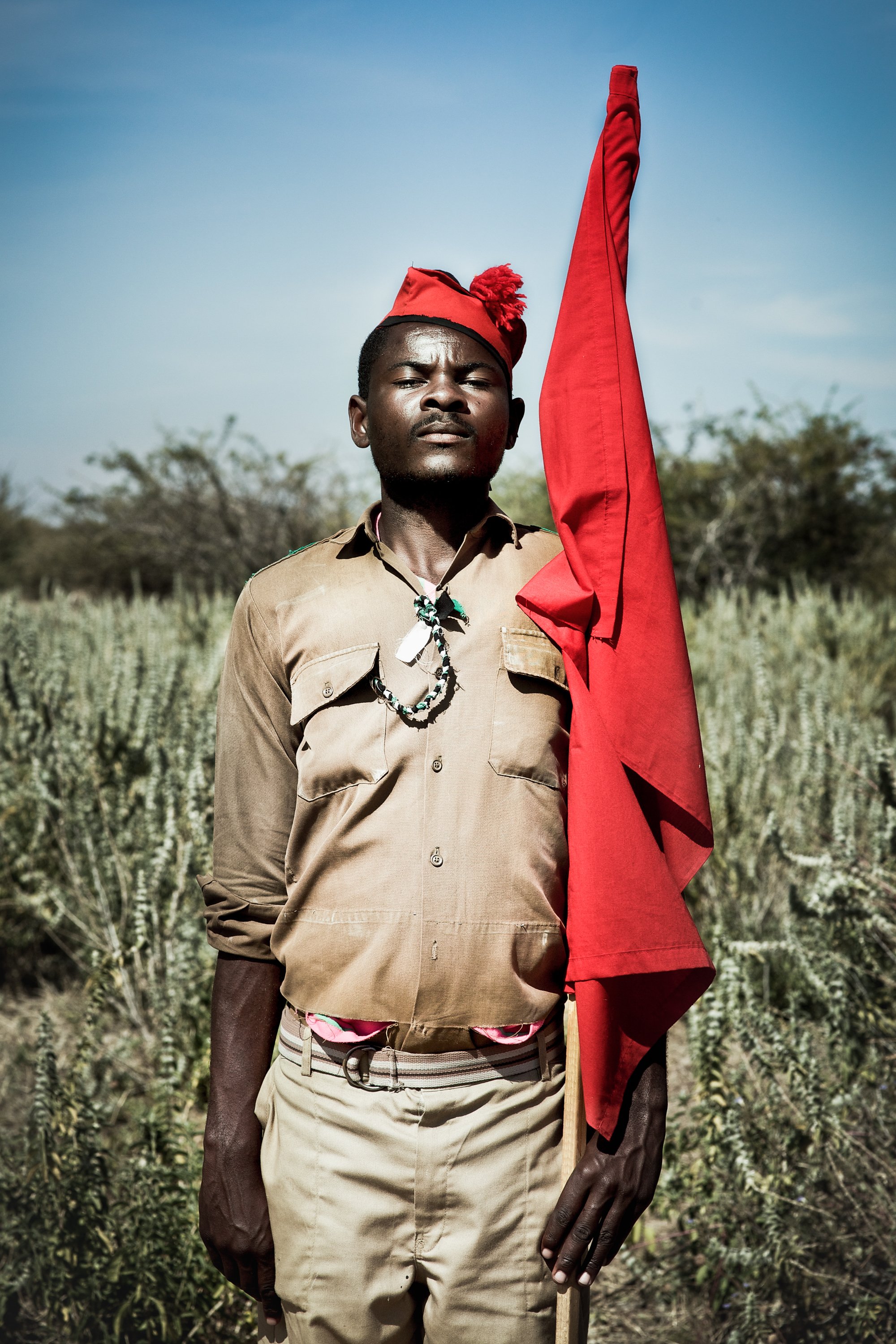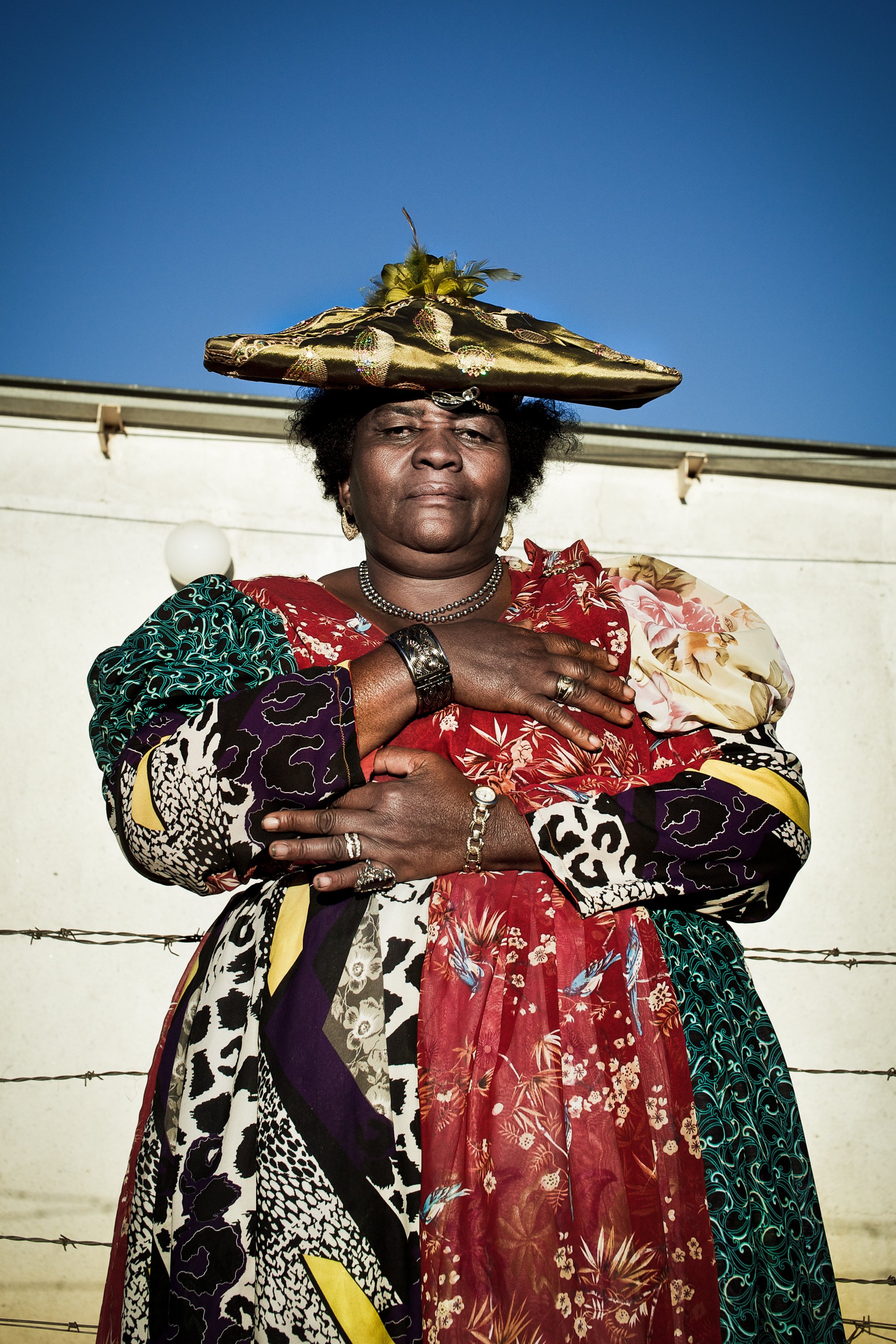EXHIBITION DETAILS
Namibia, Re/colonized, De/customized | Meeri Koutaniemi
March 1 – March 30, 2013.
STATEMENT
Social relevance plays a significant role in a number of the works featured in Portraits. Finnish photographer Meeri Koutaniemi makes a powerful, moving statement in her series, Namibia: Re-customized, De-colonized. Expertly employing the construct of the photograph to inform and create awareness, Koutaniemi’s portrait of an Ovaherero man dressed in an early German military uniform sheds light on what historians regard as the twentieth century’s first genocide—not in Europe but in Africa.
Over a span of three years, from 1904 until 1907, German colonists were responsible for the deaths of more than 100,000 Ovaherero and Nama peoples in extermination camps maintained throughout the colony of Deutsch-Südwestafrika (German South-West Africa). A century later on remembrance days, Ovaherero men wear the uniforms of their one-time colonizers in honor of their ancestors, who disrobed defeated soldiers in battle.
In Uniform for Victory, Koutaniemi’s subject stands posed in a rigid salute against the thick, Namibian brush. Wearing dark, wraparound sunglasses, he holds an unfurled flag, his crisp, khaki uniform fitting as it might have more than a hundred years earlier. But this uniform is adorned with green and white stitching and lanyards, the latter draping down from the shirt’s epaulets and from one front pocket across to the other. And as the uniforms have been incorporated into Ovaherero and Nama culture, so too has this chapter of African history, customized and adapted into celebrations to allow no one to ever forget. Charles Guice
